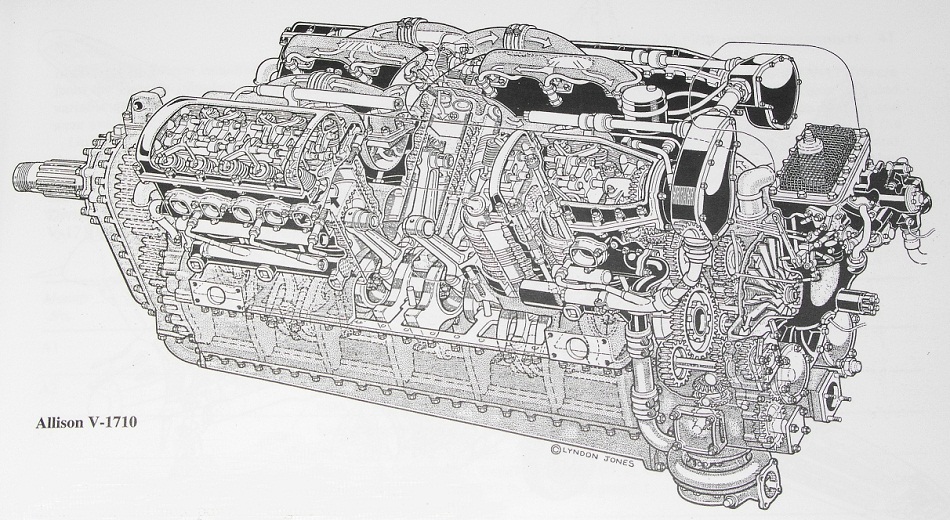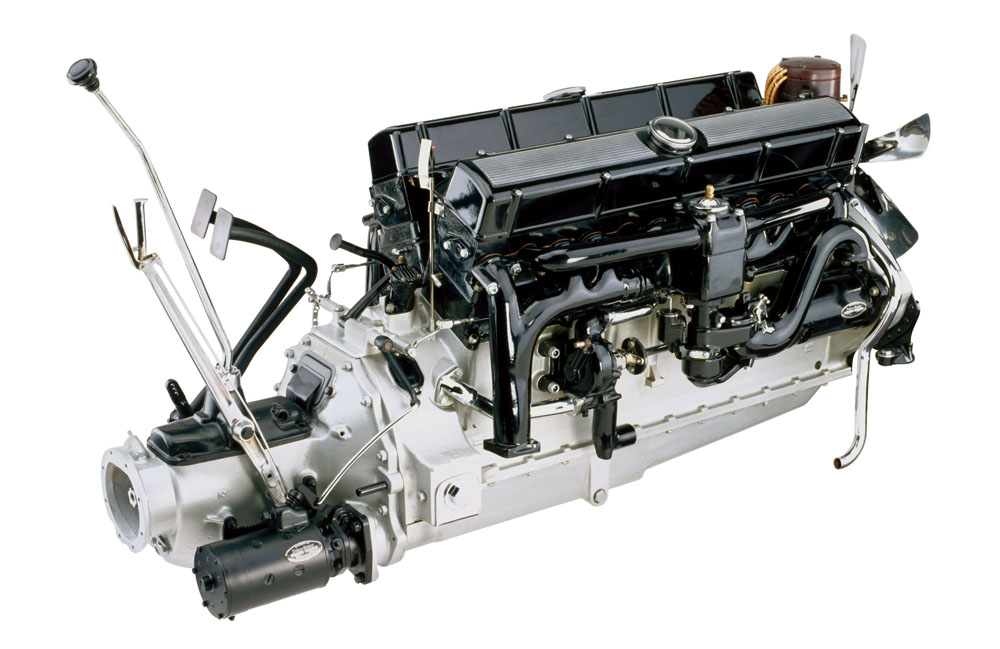But apparently some of the engineers at Packard did, because throughout the company’s life, they made a hell of a collection. For some reason, while they didn’t have plaques for their cars at the Packard Museum, they did have plaques for their engines. So I’m gonna try and summarize the information they had to share, with links to Wikipedia, and throw my own two cents in where I can. Please note, I don’t know much about aircraft engines, so don’t expect a kleinbl00-esque worthy write up, cause, well, yeah.
SO ON TO THE ENGINES!!!
This is the Packard L-12A Liberty engine. There’s no Wikipedia article for this one. According to the plaque, it was designed in just 5 days by Jesse Vincent of Packard and E.J. Hall of Hall-Scott for use in WWI. It was designed with a high power/weight ratio and ease of production in mind. Unfortunately, it’s not said which airplanes these engines went into, but let’s all just imagine that they’re all bi-wing airplanes being flown by a guy wearing goggles and a leather cap as he surveys the European countryside gathering intel behind enemy lines. Or maybe they just went in your every day cargo plane. Who knows? Not me. I’m not a plane historian. As an aside, someone really needs to make a Wikipedia page for this engine, because it is beyond awesome. It’s also beyond huge. The pictures seriously don’t do the size of this thing justice, because it’s just massive.
This is the Packard DR-980. It’s a diesel, radial engine. I’ll let the awesomeness of that statement sink in. Diesel, radial engine. Not very many of these engines were made, because people didn’t like it. Apparently they couldn’t handle the fumes and the vibrations that came from something as awesome as a diesel, radial engine. Fucking plebeians. As big as the L-12A is, the DR-980 is small. For a 9 cylinder engine, this thing is compact. It’s not half bad looking either.
This is the Packard J-47 Turbojet. To the best of my understanding, this is a Packard made copy of the GE J-47. While Packard didn’t make many, this model of engine was in everything from the F-86 Sabre to the Boeing B-50 Superfortress to an Experimental, jet powered train engine. If you don’t think a experimental jet powered train engine is cool, you better show me your definition of cool, and it better top the Chrysler Turbine Car.
This final beauty here is the Packard V-1650 Merlin. It was a copy of the Rolls Royce Merlin and was used in one of the most iconic WWII Fighters, the P-51 Mustang. War sucks. That plane is still awesome.
Have a good night guys.
The Packard L-12 is a Liberty 12 That's a bit of a Wikipedia deep-dive on its own. It went into everything from this: To this: An aircooled radial diesel aircraft engine is such a fucking terrifying idea that I'm not surprised it's in a museum. You meant the KB-50J, which was a jet'n'piston powered tanker based on the B-29. The J-47 was in bloody everything. I found one for free in Hemmings motor News once and it was only a few miles away (talk about weird). I ended up connecting the owner with Survival Research Labs. No idea what they did with it. The RR/Packard merlin was superseded by the Allison V1710, the Chevy Smallblock of WWII aviation. They were so stunningly common that they basically fostered the industry of offshore powerboat racing and formed the backbone of unlimited-class hydroplane racing into the '90s. The U3 is still running an Allison V1710.

I'm still reading that Liberty 12 article. What blows me away about that engind, more than anything, is the time table. It took five days to design, a month to build, and another month to be tested and approved? That sounds insane by today's standards. Also, I wonder how distinct the shape of that V1710 is. I could almost swear I've seen the shape of that engine block somewhere, but not in relation to aircraft or boats.
I would guess that the fine folx at Fageol probably had a lot of the legwork done already. The V1710 is a 90-degree OHV V16. The Merlin is a SOHC V-12. There aren't that many different ways to do that; the motor on my Benelli is a 1000cc water-cooled triple. The motor on most Triumphs is a 1000cc water-cooled triple. The average mook, upon seeing a Benelli motor, assumes it's a direct copy of the Triumph... despite the fact that it rotates the other direction. It's not that they're idiots, it's that there aren't that many triples in the motorcycle industry. Externally similar... despite the fact that the Cadillac is a flathead.

That Liberty L-12 went into a ton of stuff. Some crazy men stuffed three into a car for an attempt at a land speed record which tragedy around that car aside, is awsome. I will admit that after a while, the engines start to blur together. It probably takes something really distinctive or really iconic to stand out.




